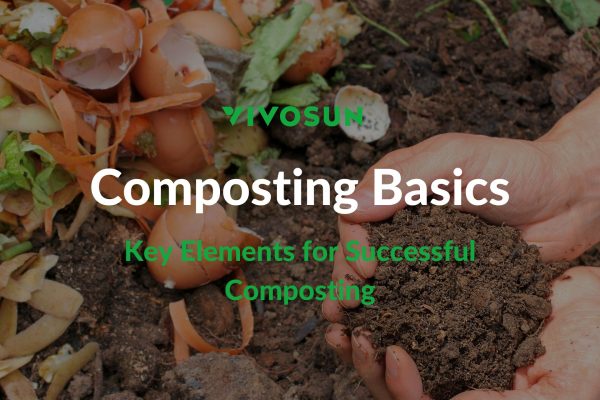When aiming to expand your gardening operations, starting from seedlings is not necessarily required. Plant cloning is an efficient and effective method to propagate new plants from strains you have found successful and favorable. Consider this scenario: you wish to set up a new grow tent or greenhouse; if starting from seeds, it would typically require 4-6 months from germination to harvest.
However, by utilizing clones, the growth cycle is shortened by several weeks as you can bypass the most juvenile stages of plant development or reduce the time required. If you are unfamiliar with the concept of plant clones, it may seem unusual initially. However, cloning is a widely adopted practice among professional growers and farmers.
Plant cloning, also known as vegetative propagation, is a common horticultural technique where genetically identical offspring are derived from the mother plant through the use of stem cuttings, root divisions, or tissue culture methods. This approach ensures that the desirable traits of the parent plant are preserved in the new plants, accelerating the growth process. It is applicable to a wide range of crops, including vegetables, fruits, and ornamental plants, offering significant practical value. Nevertheless, cloning has its limitations; the lack of genetic diversity in cloned populations may eventually lead to decline if repeatedly propagated. Therefore, incorporating sexual reproduction is also necessary.
What is plant cloning?
When most people hear the word cloning, they think of cloning animals, which sounds like a scientific feat that has nothing to do with ordinary people. But cloning a plant is different. Anyone can do it as long as they understand the specific process. Simply put, cloned plants are made by cutting a portion of the original, or “Mother” plant, and replanting the cut parts. We’ll break the rest down into sections in this article.
When selecting a mother, choose a healthy plant in the vegetative stage. It is important you don’t take cuttings from flowering plants because this can encourage the clone to turn into a hermaphrodite.
Why are clones a good choice for growing?
Genetic Uniformity and Consistency
Clones are genetically identical to the parent plant from which they were derived. This genetic uniformity ensures that the desirable traits, such as yield, flavor, disease resistance, or ornamental characteristics, are faithfully replicated in the subsequent generation. Growers can rely on the predictability and consistency of clones, which is crucial for maintaining product quality and meeting market demands.
Accelerated Maturity and Productivity
Clones bypass the juvenile phase of plant development, as they are essentially mature plant parts. This accelerated maturity translates into a shorter growth cycle, enabling faster production and quicker turnover of crops. Clones can reach reproductive maturity and harvestable stages more rapidly compared to seed-grown plants, resulting in increased productivity and efficiency.
Preservation of Elite Varieties
Cloning allows for the perpetuation of superior plant varieties that have been carefully selected and developed over time. Elite cultivars with desirable traits, such as high yield, disease resistance, or unique flavors, can be maintained and propagated indefinitely through clonal multiplication. This is particularly valuable for preserving and disseminating valuable genetic resources in agriculture, horticulture, and plant breeding programs.
Consistent Product Quality
As clones are genetically identical, they exhibit uniform growth patterns, maturation rates, and product characteristics. This consistency in quality is crucial for commercial operations, ensuring that the final product meets specific standards and consumer expectations. Clonal propagation minimizes variability, leading to more predictable and reliable yields.
Rapid Multiplication and Scaling
Clones can be rapidly multiplied through various vegetative propagation techniques, such as stem cuttings, division, or tissue culture. This ability to generate numerous clonal plants from a single parent plant allows for the rapid scaling of operations and the efficient dissemination of valuable plant material.
Cloning plants step by step
Cutting your plants

Choose a healthy and strong plant as the mother. As we mentioned, make sure the plant is in the vegetative growth stage. After you choose your perfect mother, you can start cutting. Choose a branch with at least four leaves and use a hand pruner to cut from the right side of the plant at a 45-degree angle, close to the main stem. Be careful, just get close to the main stem and don’t cut it. The cut branches should preferably be around 4-8 inches and should have at least two nodes for future growth. Next, use a razor to ensure the bottom of the cutting is at a 45-degree angle to give it the most surface area to produce new roots.
Cut the leaves and stems

After cutting the stem from the mother, you will need to trim off excess leaves and stems. Some growers say this is not necessary but there seems to be a good effect when you remove parts of the clone—try trimming and not trimming and see which works for you. This method allows more nutrients to be dedicated to producing roots, rather than being allocated to the leaves during the next stage of growth. Try not to cause tears when cutting off the branches, otherwise, the plant will have to devote some of its energy to healing.
Re-plant

In this process, rooting hormones are very important. Plants can produce their own natural auxin but adding additional rooting hormones can make plants root faster and improve cloning success—so add some hormones to the bottom of your clone, where the roots will emerge.
It is best to add rooting hormone immediately after cutting the stems and leaves of the branches because at this time the branches have the most water and can absorb the hormones to the greatest extent. Next, insert the clone into a planting cube or Rockwool, which will act as a support when the root system develops. Do this for each new clone you make.
Put your clones into a plastic tray with a lid and start misting. Keep watering them daily to keep the plants moist—your clones will be delicate, so they need a lot of help through environmental controls. Of course, your clones will also need light, but they do not need strong light so you can use a t5 grow light, an LED on a low setting, or even an incandescent bulb.
Observe your cloned plants

You will need to have the lights on for 18 hours a day to simulate natural light and keep the plants moist with a constant spray of water. After about 10 days, you can remove the plastic lid. After about another 10 days, when their roots have been established, they will start to produce leaves. Wait until their stems and leaves are fully grown before transplanting them into grow bags.
If you implement every step perfectly, your cloning will be a success. Place them back into your original growing area where their mother lives and let them grow!
Wrap-up
We believe cloning is a skill every farmer needs to master, and we would be honored if this article was of any help to you. “Love What You Grow” is not just a slogan, we should integrate it into our lives and look forward to our own growth alongside our plants!
As always if you have any questions you can message our Instagram or Facebook and we’ll be glad to help you out! We’re happy you’re on this journey and we want to help in any way we can.
Subscribe to the VIVOSUN newsletter for growing tips, grower stories, and special offers, and get 12% off your first order!
We love the new VIVOSUN Smart Grow System and we are certain that you too will love it once you try it.
And join our Facebook farmer’s community for even more exclusive contests and prizes!
Download VIVOSUN App to get 18% off and explore more information!

You may also like articles:






